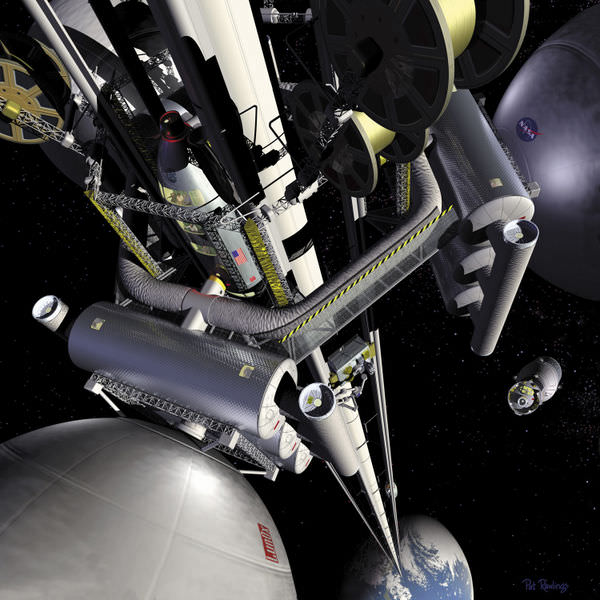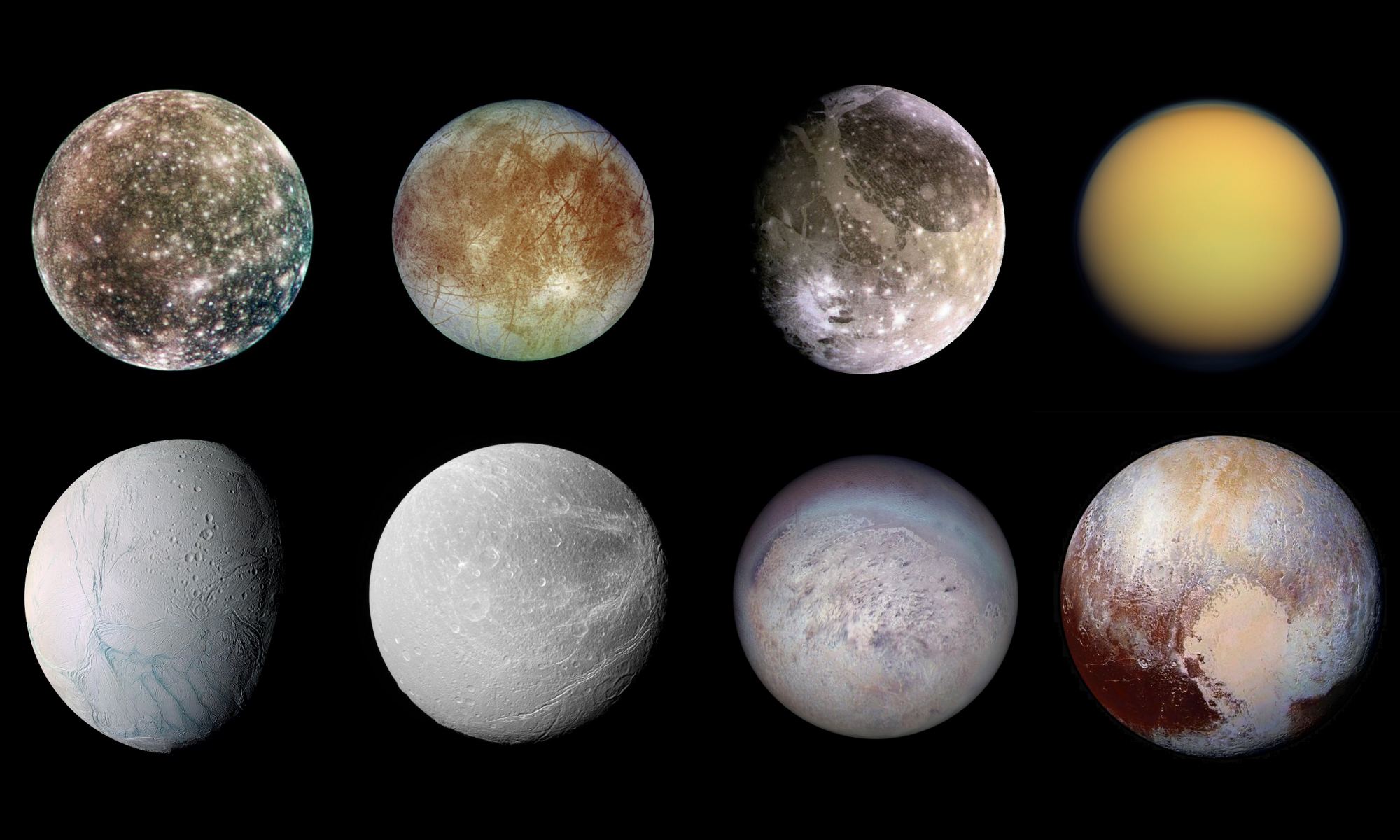We recently reported on the successful deployment of the solar sail of the Advanced Composite Solar Sail System (ACS3) technology demonstration mission. That huge achievement advances one of the most important technologies available to CubeSats – a different form of propulsion. But getting there wasn’t easy, and back in May, a team of engineers from NASA’s Langley Research Center who worked on ACS3 published a paper detailing the trials and tribulations they went through to prepare the mission for prime time. Let’s take a look at what they learned.
Continue reading “What Did We Learn From Manufacturing the ACS3 Solar Sail Mission?”A Stellar Flyby Jumbled Up the Outer Solar System

An ancient passerby may have visited the Sun and inadvertently helped shape the Solar System into what it is today. It happened billions of years ago when a stellar drifter came to within 110 astronomical units (AU) of our Sun. The effects were long-lasting and we can see evidence of the visitor’s fleeting encounter throughout the Solar System.
Continue reading “A Stellar Flyby Jumbled Up the Outer Solar System”Amateur Astronomer Finds Additional Asteroids With Remote Telescopes
Three amazing recent asteroid finds show what’s possible in terms of astronomy online.
Practical astronomy is increasingly becoming an online affair. In 2023 we wrote about this trend, and highlighted how Russian observer and amateur astronomer Filipp Romanov used time on remote observatory networks to successfully discover two asteroids, which he named 623826 Alekseyvarkin and 623827 Nikandrilyich after his great-grandfathers. Now, Filipp has repeated this feat and pushed the limit of what’s possible online with the discovery of a trio of asteroids, including a rare near-Earth asteroid discovery found using a remote system.
Continue reading “Amateur Astronomer Finds Additional Asteroids With Remote Telescopes”BepiColombo’s New Images of Mercury are Cool

The ESA/JAXA BepiColombo spacecraft made another flyby of its eventual target, Mercury. This is one of a series of Mercury flybys, as the spacecraft completes a complex set of maneuvers designed to deliver it to the innermost planet’s orbit. Its cameras captured some fantastic images of Mercury.
Continue reading “BepiColombo’s New Images of Mercury are Cool”The True Size of Galaxies is Much Larger Than We Thought

Ask most people what a galaxy is made up of, and they’ll say it’s made of stars. Our own galaxy, the Milky Way, hosts between about 100 to 300 billion stars, and we can see thousands of them with our unaided eyes. But most of a galaxy’s mass is actually gas, and the extent of the gas has been difficult to measure.
Researchers have found a way to see how far that gas extends into the cosmos.
Continue reading “The True Size of Galaxies is Much Larger Than We Thought”Using A Space Elevator To Get Resources Off the Queen of the Asteroid Belt
Here at UT, we’ve had several stories that describe the concept of a space elevator. They are designed to make it easier to get objects off Earth and into space. That, so far, has proven technically or economically infeasible, as no material is strong enough to support the structure passively, and it’s too energy-intensive to support it actively. However, it could be more viable on other worlds, such as the Moon. But what about worlds farther afield? A student team from the University of Colorado at Colorado Springs looked at the use case of a space elevator on Ceres and found that it could be done with existing technology.
Continue reading “Using A Space Elevator To Get Resources Off the Queen of the Asteroid Belt”Iron Winds are Blowing on WASP-76 b

Exoplanets have been discovered with a wide range of environmental conditions. WASP-76b is one of the most extreme with a dayside temperature of over 2,000 degrees. A team of researchers have found that it’s even more bizarre than first thought! It’s tidally locked to its host star so intense winds encircle the planet. They contain high quantities of iron atoms that stream from the lower to upper layers around the atmosphere.
Continue reading “Iron Winds are Blowing on WASP-76 b”ALMA Detects Hallmark “Wiggle” of Gravitational Instability in Planet-Forming Disk

According to Nebula Theory, stars and their systems of planets form when a massive cloud of gas and dust (a nebula) undergoes gravitational collapse at the center, forming a new star. The remaining material from the nebula then forms a disk around the star from which planets, moons, and other bodies will eventually accrete (a protoplanetary disk). This is how Earth and the many bodies that make up the Solar System came together roughly 4.5 billion years ago, eventually settling into their current orbits (after a few migrations and collisions).
However, there is still debate regarding certain details of the planet formation process. On the one hand, there are those who subscribe to the traditional “bottom-up” model, where dust grains gradually collect into larger and larger conglomerations over tens of millions of years. Conversely, you have the “top-down” model, where circumstellar disk material in spiral arms fragments due to gravitational instability. Using the Atacama Large Millimeter/submillimeter Array (ALMA), an international team of astronomers found evidence of the “top-down” model when observing a protoplanetary disk over 500 light-years away.
Continue reading “ALMA Detects Hallmark “Wiggle” of Gravitational Instability in Planet-Forming Disk”Largest Dark Matter Detector is Narrowing Down Dark Matter Candidate
In 2012, two previous dark matter detection experiments—the Large Underground Xenon (LUX) and ZonEd Proportional scintillation in Liquid Noble gases (ZEPLIN)—came together to form the LUX-ZEPLIN (LZ) experiment. Since it commenced operations, this collaboration has conducted the most sensitive search ever mounted for Weakly Interacting Massive Particles (WIMPs) – one of the leading Dark Matter candidates. This collaboration includes around 250 scientists from 39 institutions in the U.S., U.K., Portugal, Switzerland, South Korea, and Australia.
On Monday, August 26th, the latest results from the LUX-ZEPLIN project were shared at two scientific conferences. These results were celebrated by scientists at the University of Albany‘s Department of Physics, including Associate Professors Cecilia Levy and Matthew Szydagis (two members of the experiment). This latest result is nearly five times more sensitive than the previous result and found no evidence of WIMPs above a mass of 9 GeV/c2. These are the best-ever limits on WIMPS and a crucial step toward finding the mysterious invisible mass that makes up 85% of the Universe.
Continue reading “Largest Dark Matter Detector is Narrowing Down Dark Matter Candidate”Could Comets have Delivered the Building Blocks of Life to “Ocean Worlds” like Europa, Enceladus, and Titan too?
Throughout Earth’s history, the planet’s surface has been regularly impacted by comets, meteors, and the occasional large asteroid. While these events were often destructive, sometimes to the point of triggering a mass extinction, they may have also played an important role in the emergence of life on Earth. This is especially true of the Hadean Era (ca. 4.1 to 3.8 billion years ago) and the Late Heavy Bombardment, when Earth and other planets in the inner Solar System were impacted by a disproportionately high number of asteroids and comets.
These impactors are thought to have been how water was delivered to the inner Solar System and possibly the building blocks of life. But what of the many icy bodies in the outer Solar System, the natural satellites that orbit gas giants and have liquid water oceans in their interiors (i.e., Europa, Enceladus, Titan, and others)? According to a recent study led by researchers from Johns Hopkins University, impact events on these “Ocean Worlds” could have significantly contributed to surface and subsurface chemistry that could have led to the emergence of life.
Continue reading “Could Comets have Delivered the Building Blocks of Life to “Ocean Worlds” like Europa, Enceladus, and Titan too?”




